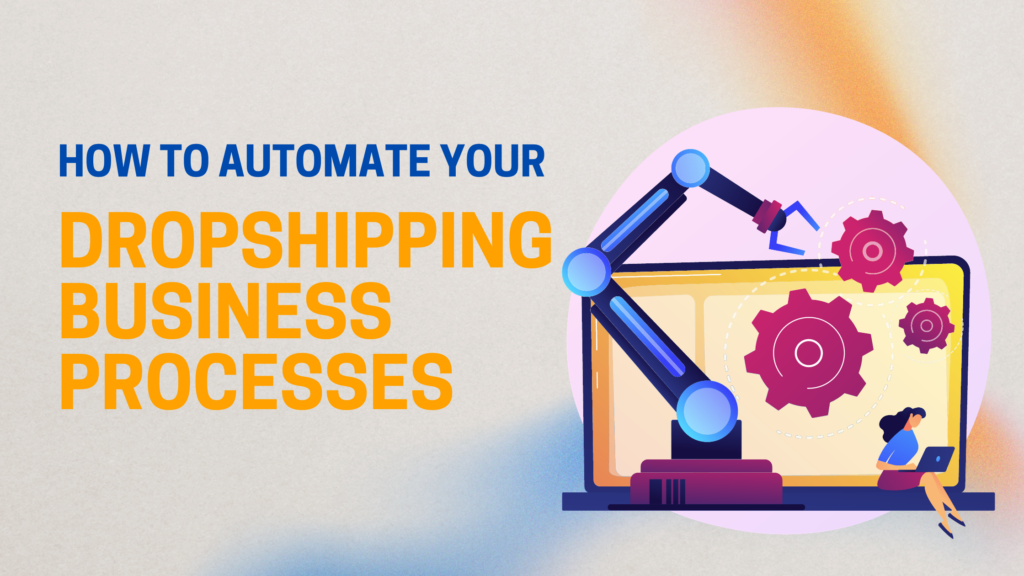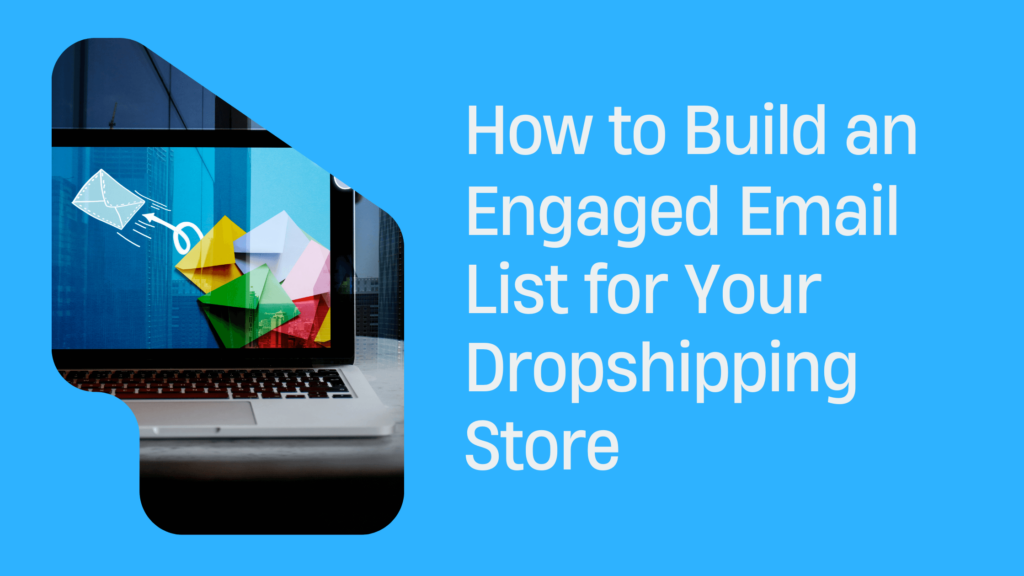How to Automate Your Dropshipping Business Processes
https://www.cflowapps.com/business-process/
Running an online dropshipping business can be tricky, but what if there were ways to turn these problems into a smooth, easy operation?
From order management to inventory control, every part of your business could be automated, saving you time and reducing mistakes.
Dive into this complete guide where we explore the power of automation for your dropshipping business. You’ll learn how automation can improve efficiency, reduce costs, enhance customer experience, and give your business the edge it needs in this competitive market.
Let’s unlock the potential of your dropshipping business together!
Core Concepts of Dropshipping Automation
As you deal with the difficulties of running your successful e-commerce dropshipping business, an important tool you can use is automation.
Automated dropshipping, a powerful model that uses technology and software integrations to simplify tasks and improve processes, can change your operations, giving you an advantage over old-fashioned manual methods.
What is Automated Dropshipping?
Dropshipping, traditionally, involves time-consuming processes like order management and inventory updates, often with human errors.
However, the automated dropshipping model serves as a solution to these challenges. Automating your operations means using advanced software systems to handle these processes, cutting down manual work and improving accuracy.
Imagine a system where tasks like processing orders, tracking inventory levels, and updating stock information, all become easy.
That’s what automation provides – a system where these tasks are done quickly, accurately, and efficiently, without the usual pressure and risk of mistakes.
The complexities of running your business are handled by smart technology systems that work around the clock – a game-changer in the competitive e-commerce world.
Benefits of Automating Dropshipping Operations
So, how can automation change your business? Here’s how you can benefit:
1. Improved Efficiency:
The first big benefit of automation is major time savings. Instead of hours spent manually entering data, processing orders, and managing inventory, these tasks can be done quickly and well.
Also, with repetitive tasks automated, you can focus your attention on strategic initiatives like market growth and product research.
2. Reduced Manual Work and Errors:
Your business can greatly benefit from removing error-prone manual work. Using automation means lowered risk of data issues, shipping errors, and incorrect inventory updates.
A synchronized system between your storefront and supplier warehouses can be maintained, improving the accuracy of product and order data.
3. Scalability:
Automation establishes a strong base for the growth of your dropshipping business. With automated processes, you can handle higher order volumes and manage inventory effectively, enabling you to take advantage of new opportunities, expand your product range, and grow your customer base without manual constraints.
4. Cost Savings:
Automation can lead to major overhead cost reductions. Rather than hiring more staff to handle manual work, smart tools and software can take on these tasks, reducing labor costs and helping your bottom line.
Also, automation helps avoid costly mistakes like incorrect pricing or fulfillment errors, which directly impact your profitability.
5. Enhanced Customer Experience:
Automation also enables a better customer journey by allowing faster order fulfillment, accurate tracking updates, and efficient customer communication.
Timely delivery and transparency during purchase can increase customer satisfaction and loyalty.
By providing a smooth, efficient, hassle-free experience, you can gain customer trust and repeat business.
In short, automation is not just a tool to streamline your operations. It’s a strategic asset that can propel your e-commerce dropshipping business to new heights of efficiency, scalability, and customer satisfaction.
Let’s explore how automation can be used in key operational areas.
Implementing Automation at Key Stages
Automating Order Management
Your customers deserve a smooth shopping experience and accurate, prompt delivery.
Achieving this manually can be difficult, particularly as your business grows and the order volume increases.
Fortunately, with the use of automation tools, you can make a seamless order management process.
These tools are capable of automating complex order processes, like sending orders directly to suppliers based on pre-set rules, saving you the manual effort of routing orders.
The magic of technology allows for the combining of order data across various sales channels.
This means no more manual data entry or tedious making things match, as all your orders from your website, marketplace platforms, and social media shops can be managed centrally with an automated system.
Beyond simplifying order submission, automated systems can efficiently handle changes, cancellations, and exceptions like address updates or order modifications.
This not only saves valuable time but also significantly reduces order processing errors.
Further, such automation ensures real-time tracking info and status updates from suppliers.
Through this automation, you can provide accurate and quick status updates to your customers, enhancing their purchase experience.
Automating Inventory Management
Inventory management is another critical area where automation can reap significant benefits for your business.
By using automation tools, live inventory counts can be pulled directly from suppliers.
This updated information prevents you from selling items that are out of stock, thus enhancing your credibility with customers.
On top of that, the software can also automatically update your product catalogs based on the inventory data received from suppliers.
This ensures that your customers always access accurate and current information about the products you offer.
Automation tools can also deliver timely alerts when inventory levels reach a predetermined threshold or when outages happen.
This kind of insight allows you to avoid out-of-stock situations and manage inventory proactively.
By having combined inventory data across all sales channels, you can prevent overselling and provide a seamless shopping experience for your customers.
Automating Communications
Building strong, transparent customer relationships is paramount for the success of your dropshipping business.
Automation can significantly contribute to this by enhancing your communication approaches.
With automation tools, you can schedule and send automated email notifications to your customers at crucial stages of their purchasing journey, like:
– Order confirmation
– Shipping updates
– Delivery confirmation
This exceptional communication service keeps your customers in the loop and contributes significantly towards their satisfaction.
Likewise, an automated system can also provide real-time tracking information and order status updates to your customers, further improving the transparency and reliability of your service.
Automation can simplify the process of managing product returns and refunds by coordinating between you, your customers, and suppliers.
This ensures timely resolution of return requests and bolsters positive customer experiences.
Lastly, by using customer relationship management (CRM) and marketing platforms, automation can help you engage with your customers through personalized, strategically timed communication.
This targeted contact, driven by customer behavior, preferences, and purchase history, boosts customer loyalty and encourages repeat purchases.
By implementing automation in these key stages of dropshipping operations, you can not only save time and reduce errors but also significantly improve customer satisfaction and operational efficiency.
But how do you choose the right tools for your needs?
We’ll explore that in the next section.
Choosing the Right Software for Your Needs
Making the right choice in terms of software for automation is crucial for the success of your dropshipping business.
The software you choose should be not only robust but should also perfectly align with your specific needs and business requirements.
Features to Look for in Dropshipping Automation Tools
Let’s consider some of the essential features an automation tool should possess to assist you effectively:
1. Multi-channel Order Management:
Look for tools that provide a unified system allowing you to manage orders from all sales channels.
This helps streamline your order processing and ensures consistency across different platforms.
2. Rules-based Order Routing Engine:
A robust automation tool includes a rules-based order routing engine.
Such a feature lets you set specific criteria to automatically route orders to the most suitable suppliers based on factors like location, inventory levels, and shipping times.
3. Customizable Workflows and Business Logic:
Your business is unique, and your tool should reflect that too.
Choose a software that allows you to customize workflows and business logic according to your specific needs.
This ensures the tool you choose adapts efficiently to your exclusive business processes.
4. API and App Integrations with Sales Channels:
Seamless integration of your automation tool with your chosen e-commerce platforms and sales channels is necessary.
Such integration allows for:
– Real-time data synchronization
– Effective inventory management
– Updated order information.
5. Inventory Management and Catalog Syncing:
Inventory management is a pivotal part of dropshipping.
Choose tools that offer:
– Real-time inventory updates
– Alerts on low stock
– Automatic syncing of product catalogs with your suppliers
This will ensure your customers see accurate information about product availability.
6. Analytics and Reporting on Key Metrics:
Informed decision-making is a foundation of a successful business.
Choose tools that offer robust analytics and reporting capabilities, thereby allowing you to track key metrics like sales performance, supplier performance, and inventory turnover.
Integrations with eCommerce Platforms like Shopify
If you are using Shopify, it’s crucial to select a dropshipping automation tool compatible with it.
Shopify, with its built-in tools and extensive app ecosystem, provides a solid foundation for your dropshipping business.
This makes it easy to use both Shopify’s and third-party apps to create a comprehensive and efficient business model.
One recommended dropshipping automation platform that works well with your Shopify store is Inventory Source.
Inventory Source provides features like multi-channel order management, inventory synchronization, and catalog management and integrates favorably with Shopify.
By combining the power of Inventory Source and Shopify, you can get complete automation, streamline your operations, and improve the success of your dropshipping business.
Therefore, selecting the right automation software involves understanding your unique business needs, identifying the specific features that meet these needs, and making sure the chosen software integrates smoothly with your existing sales platform.
In the next section, we will cover more ways to automate dropshipping, including how to build strong supplier relationships and plan for returns and refunds.
Optimizing Operations and Relationships
While automation is a powerful tool for streamlining your operations, the human aspect of your business – specifically your relationships with suppliers and customers, cannot be overlooked.
Building strong supplier relationships and planning for returns and refunds are key elements of a thriving dropshipping business.
Building Strong Supplier Relationships
Your relationship with suppliers directly influences your operations and customer satisfaction.
Automating dropshipping isn’t just about technology; it’s about building systems and processes that work for everyone involved including your suppliers.
1. Providing Flexible Systems Tailored to Suppliers:
Fitting your operations to the needs of your suppliers goes a long way in making a strong relationship.
Understand your suppliers’ needs, and seek to provide a system that meets these requirements.
2. Growing Mutually Beneficial Partnerships:
Remember, a partnership with your suppliers should be good for both you and them.
Look for chances to support them. This could mean promoting their products or sharing valuable information about your customers’ likes.
3. Tools to Track and Improve Supplier Performance:
Communication is key in any relationship, and your relationship with suppliers is no different.
Use automation tools to track the performance of your suppliers, and share this information to help them get better where needed.
Planning for Returns and Refunds
Returns and refunds happen with any online business, and your dropshipping operations should include a solid plan to handle them well.
1. Choices for Accepting Returns from Customers:
Make returning easy for your customers.
A clear return policy, along with an easy process to start returns, can turn a bad experience into a good one.
Automation tools can simplify this process, taking returns from customers, and tracking the progress of their requests.
2. Managing Logistics of Returns to Suppliers:
Once a return starts, efficient shipping to return the product to the supplier is essential.
This means working with your suppliers to ensure smooth handling of returns.
Through automation, you can streamline this process, handling tasks like making return labels and tracking shipments.
3. Tools to Automate Returns Processing:
Returns processing can be tricky, but automation can help.
Look for tools that can handle tasks like return authorizations, tracking returned products, and managing refunds.
By handling returns and refunds well, you can give customers a good experience while keeping them happy.
After looking at the importance of building strong supplier relationships and planning for returns and refunds, it’s time to go deeper into choosing a dropshipping automation platform, and how a solution like Inventory Source can simplify your business operations.
Choosing a Dropshipping Automation Platform
Picking the right automation platform is a very important choice that can make or break your dropshipping business.
Rather than a generic tool, you need specialized software built for the unique needs of dropshipping companies.
Inventory Source stands out as an all-in-one automation tool designed from the ground up to meet the demands of dropshipping.
Why Software Like Inventory Source is Helpful
Inventory Source is an end-to-end automation solution created specifically for dropshipping operations. Unlike a mix of individual apps, Inventory Source delivers unified automation to handle the diverse tasks involved in dropshipping:
– Automated order routing that instantly sends orders to the best suppliers based on customizable rules. This removes the tedious manual work of processing each order individually.
– Real-time inventory synchronization that pulls live quantity counts and availability data from suppliers to ensure your product listings always show accurate information. Manual inventory management becomes obsolete.
– Automated supplier and product onboarding that allows you to quickly integrate new dropship partners and products through bulk uploads.
– Adding products one-by-one is eliminated.
– Robust analytics and reporting that reveal actionable insights into:
– Sales volumes
– Inventory turnover
– Supplier performance
– And more
Guesswork is replaced with data-driven decisions.
With seamless integration support for major ecommerce platforms like Shopify, Amazon, eBay and more, Inventory Source connects directly into your existing sales channels for true end-to-end process automation.
Inventory Source’s unified all-in-one approach provides the specialized automation capabilities needed for dropshipping, unlike more generic tools.
The platform eliminates the complexity of integrating different apps and provides tailored automation to streamline operations.
Key Features of Inventory Source’s Automation Software
Inventory Source includes robust automation features designed specifically for dropshipping:
– Instant connectivity to over 180 verified dropship suppliers gives you access to exclusive, high-demand products to boost sales.
– Onboarding new suppliers takes minutes rather than weeks.
– Automatic syncing of product data like prices, quantities, images, and descriptions from suppliers to your ecommerce store or other sales platforms.
– Products stay up-to-date without manual data entry.
– Rules-based order processing that automatically routes orders to the most efficient suppliers based on your criteria for fulfillment speed, location, cost, and more.
– Manual order handling is eliminated.
– Automated shipment tracking and status updates help keep customers informed throughout the delivery process for exceptional service.
– Manual order follow-ups are reduced.
– Customizable automation rules allow you to:
– Set product pricing
– Categorize products
– Apply filters
– And more!
For example, you can configure rules to automatically:
– Set profit margins
– Restrict products.
– Multi-channel sales support to manage orders from platforms like Shopify, Amazon, eBay, and more in one centralized dashboard.
No more switching between apps and sites.
– Powerful analytics and reporting provide insights into sales volumes, inventory levels, supplier performance, and other KPIs to inform better decisions.
Identifying issues becomes quick and easy.
With end-to-end automation tailored for dropshipping, Inventory Source helps you scale your business efficiently.
By implementing specialized software built for your needs, you can transform workflows to be more streamlined and productive.
Automation through purpose-built solutions unlocks immense time and cost savings while providing the platform for growth.
Inventory Source delivers the capabilities and integrations to help your dropshipping business thrive.
Closing
Automation is the key to success in your dropshipping business. By using automation tools and software, you can save time, reduce mistakes, improve efficiency, and make the customer experience better.
I cannot stress enough the importance of managing orders efficiently, keeping tabs on your inventory, and maintaining crystal-clear communication channels. Let’s also not forget the significance of forging robust relationships with suppliers and having a strategy in place for returns and refunds.
To choose the right automation software, look for features like:
– Multi-channel order management
– Customizable workflows
– API integrations
– Inventory management
– Analytics
If you’re getting into dropshipping, you should definitely check out Inventory Source’s platform.
It stands out as a comprehensive automation solution that integrates seamlessly with various e-commerce platforms, ensuring a smooth operational flow for your business.
By picking the right automation platform, like Inventory Source, you can simplify operations, optimize relationships, and scale your dropshipping business effectively.
Take action today and unlock the full potential of automation for your business!



